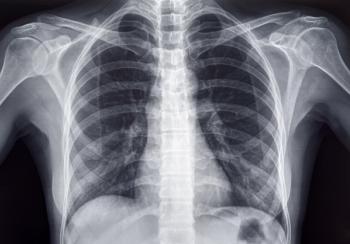
Reducing the Risk of Severe Radiation-induced Lymphopenia
South Korean researchers report results that show pencil-beam scanning proton therapy may lower the risk of severe radiation-induced lymphopenia in people treated for lung cancer.
A number of studies have found that severe radiation-induced
Nalee Kim and colleagues, from
They developed a time-dependent computational framework called the hematological dose (HEDOS), which estimates the dose to circulating blood cells, based on a blood-flow simulation. Using that simulation, they conducted another
Of 201 patients in the analysis, 164 were treated with IMRT and 37 with PBSPT. A total dose of 66 GyE in 30 fractions was prescribed in both groups.
Absolute lymphocyte count (ALC) in the entire cohort declined gradually during the treatment course and recovered afterward. From Week 4 to the last week of the course, ALCs were significantly lower in the IMRT group than in the PBSPT group. Of 107 patients who developed grade 4 lymphopenia, 75 experienced SRIL: three (8.1%) in the PBPST group and 72 (43.9%) in the IMRT group. SRIL was associated with a greater risk of tumor progression and death.
The dose distribution of CBCs was significantly lesser in the PBSPT group. When the researchers incorporated the dose information of CBCs for predicting SRIL, CBC D90% >2.6 GyE significantly increased the risk of SRIL together with basic lymphocyte count and target volume. Moreover, PBSPT significantly reduced the dose of CBC D90%, compared with IMRT.
To the best of their knowledge, say Kim and colleagues, this is the first analysis determining the clinical significance of PBSPT when incorporated with the dose calculation of CBCs. They note that the limited number of patients in the PBSPT group might have led to an overestimation of the effect of PBSPT, but they say that the target volume or baseline ALC, which could also affect SRIL development, did not differ significantly.
Newsletter
Get the latest industry news, event updates, and more from Managed healthcare Executive.



















































